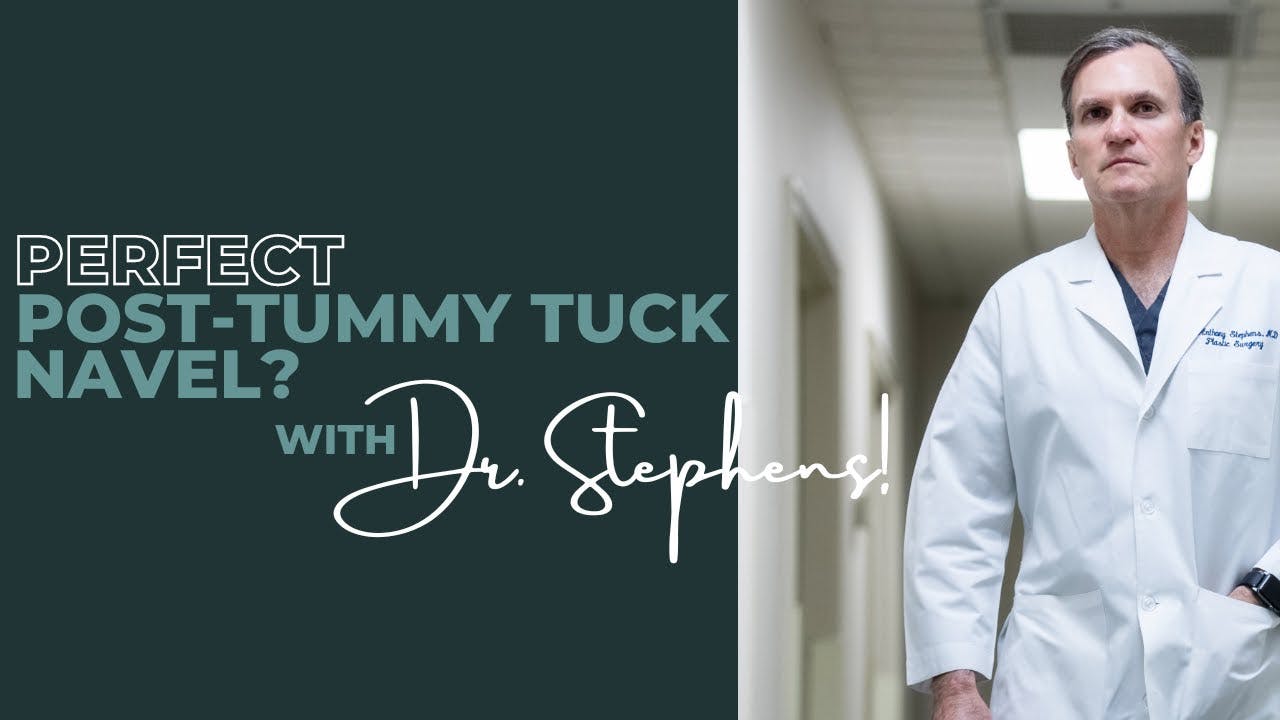The umbilicus (the belly button) is an essential feature of the abdomen, and the way it looks after a tummy tuck can make or break the result of the surgery.
Dr. Stephens noticed that the scar around a woman’s belly button is a telltale sign of a tummy tuck, and began to develop and perfect a technique to resolve this issue: the neo-umbilicus technique. In this method, he sutures the abdominal wall from the abdomen’s top to the lower abdomen with a continuous running suture or stitches, not allowing for a herniation repair.
This ensures a tight, smooth, flat contour with overall better restoration of the abdominal wall.
The neo-umbilicus technique allows the new belly button to be positioned in a more desired location on the abdomen. It doesn’t create scarring and it can be used in cases in which the original skin and tissue of the belly button cannot be preserved. It achieves excellent aesthetic results and high levels of satisfaction among patients. However, this technique can be less effective in very thin patients whose belly button remains flat due to the lack of fatty tissue.
It’s important to note that preserving the belly button during a tummy tuck is not an unacceptable method — but it is very unpredictable when it comes to scarring. Some patients’ belly buttons look great and the scar is hidden in the umbilicus, but some leave a hypertrophic scar that can’t be improved.
Instead of having a wonderful tummy tuck result with a bad-looking belly button, Dr. Stephens’s neo-umbilicus technique can achieve a beautiful tummy tuck and an aesthetically pleasing belly button.


























